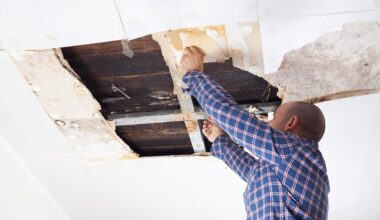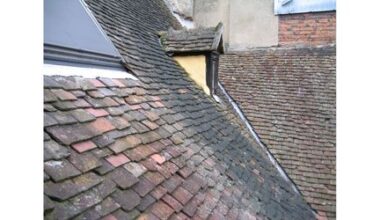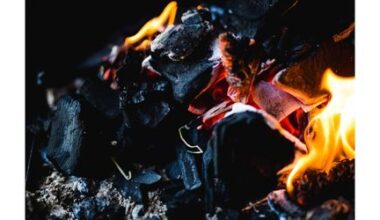Many kinds of pillows cannot be machine washed, but they still need to be cleaned regularly to keep them looking and smelling their best. If you’ve been wondering how to wash throw pillows without a removable cover with stuffing by hand and in a washer, you can spot-clean them to get rid of spills or stains and freshen them up with baking soda or a homemade natural spray. A vacuum cleaner or lint roller can also help remove basic dust, dander, and pet hair from pillows without using any moisture or chemicals. Let’s look at how to wash throw pillows without a removable cover with stuffing by hand and in a washer in this post.
How Often Should you Wash Throw Pillows?
When cleaning your home, don’t forget about your ornamental accent pillows. These well-decorated pillows are crucial parts of our home design and are popular fixtures in bedrooms and living spaces all around the world. Whether you wash your throw pillows by hand or in a washer will depend on whether or not they have a removable decorative cover and stuffing. If so, wash these pillow covers at least once a month. The filling inside the cushion must also be maintained and cleaned at least every other month.
Can Throw Pillows Go in a Washer?
It is determined by the fabric and inserts of the pillow. Your initial thought may be to wash your throw pillows with stuffing in the washer. If it fits, this is a fantastic idea, until you reach for the zipper on the removable cover and discover that it does not exist. To be clear, you can wash complete throw pillows in your washer if you use a gentle cycle and a mild detergent, but it’s still better to separate the cover from the insert first. Even so, you’ll want to make certain that the cloth won’t be damaged during the wash cycle.
How to Wash Throw Pillows Without Removable Cover
After you’ve determined the fabric and fill type of your throw pillows and double-checked any care instructions, you may discover that you can’t wash them. If that’s the case, here’s how to wash your throw pillows by hand without a removable cover.
Tools and Materials Needed:
- Vacuum
- Mild cleaning detergent
- Water
- White towel
- Sponge
Step 1: Read the Manufacturer’s Instructions.
This is a simple step that should not be overlooked. If you’re not sure what fabric you’re working with or where to begin, the care instructions on the pillow’s label should help you draw some conclusions. Check out the instructions, if there are any.
Step 2: Empty the Surface Grime
If your throw pillows don’t have a removable cover, you can wash them by hand using a handle vacuum or a vacuum hose with an upholstery attachment. You can move the pillow up and down or side to side as you clean it. This will help to take up any hair, crumbs, or dirt that may be sitting on the surface of your fabric, making the subsequent washing process more successful.
Step 3: Conduct a Spot Test
If you’re not sure what kind of fabric you’re working with, this step is essential. Combine a small amount of mild detergent with cold to warm water. Directly apply a spoonful of the cleaning solution to the cushion fabric. Then, blot it a few times with a clean, dry, white towel to determine whether any cushion color transferred onto the towel. Hold the cloth in place for about 30 seconds, then check for color transfer again.
Allow the area to dry completely before inspecting for color loss. If everything seems good, you can use that cleaning solution, and your fabric should be alright.
Step 4: Wash your Throw Pillows by Hand
Soak a soft sponge in water with a little mild detergent. Wring out the sponge, and then use gentle circular motions to apply the solution to the pillow fabric. As best you can, work it into the fabric and around the full surface of the pillow. When you’re finished, wipe any extra soap or water from the pillows using a clean towel.
How to Get Stains and Spots Out of Throw Pillows
Do you want to know how to spot wash throw pillows without a removable cover or how to handle tough stains by hand? It all begins with the proper stain remover. You can use the same mild detergent you’ll use to hand wash your throw pillows, but some materials, such as wool, may require a different detergent. It is important to research to identify what works best on the fabric of your cushion.
Materials and tools required:
- Stain or spot cleaner recommended for your pillow fabric
- Sponge or soft-bristled brush
- Mild detergent
- Towel
Step 1: Deal with Spots and Stains
Before you wash your pillows, use a stain remover spray or a stain remover made for that fabric to get rid of any stains. Simply dab a tiny amount of cleaning solution on the stain. Make a spot test with the stain remover first to ensure that it will not damage or discolor the cushion fabric. If the stain remover is safe to use, gently rub it into the affected area with a sponge or soft-bristled brush.
Step 2: Clean a Spot
Combine a teaspoon of mild detergent with cool water. Soak up some of the cleaning solutions with a clean towel, wring it out, and then wipe the areas that you treated with the stain remover. Repeat the technique as necessary until the dirt or grime is removed.
Step 3: Hand Wash
Hand wash your throw pillows as usual, or give them a fast spin in the washer if the fabric and insert allow it.
How to Wash Throw Pillows in Washer
It is pretty simple to wash your throw pillows in the washer. Begin by removing all pillowcases and any other removable pillow parts, such as neck rolls or gel liners. Check the tag or care instructions for the appropriate washing settings; normally, memory foam should be washed on a gentle cycle in warm to cool water.
It is crucial to use a gentle detergent designed exclusively for cleaning delicates. Avoid using bleach or solvents, since these can permanently destroy the pillow. After washing the pillow, rinse it in cold water and spin it in the washing machine to assist remove excess water.
Different types of throw pillows may necessitate more care and attention. Some pillows, for example, may need to be carefully placed over an open towel rack or other protective covers so that the foam doesn’t get poked while it dries.
When washing pillowcases, add an extra rinse cycle to ensure that all soap is removed.
Keep your throw pillows in good condition by sometimes airing them out and allowing air to circulate within. This is a natural technique to keep things fresh, and it may even fluff them up in some circumstances.
To minimize the general odor of the pillows and avoid the buildup of bacteria and dust mites, lightly sprinkle baking soda on the foam and lightly vacuum it off at least once a season.
How to Wash Throw Pillows With Stuffing
Couch cushions and throw pillows can be cleaned or covered to hide stains, but the stuffing can hold on to smells even after the stains are gone. If you don’t want to buy a new pillow and sprays and odor neutralizers don’t work, you could take the throw pillows apart and wash the stuffing without hurting the fabric.
Step 1
Remove the couch cushion or pillows’ covers. Most pillows will have zip-off covers that can be removed and replaced with ease. Remove the throw pillow covers and wash them while you clean the stuffing.
Step 2
Dilute bleach in a bathtub full of the hottest water you can get from the faucet. Before you begin catching water in the tub, you may need to run the water for a time, and enable it to heat up.
Step 3
Fill the bathtub halfway with hot water, then add a gallon of bleach. Pour slowly to avoid splashing and damaging the clothes you’re wearing.
Step 4
Fill the water with the foam or other form of stuffing from the couch cushion. To avoid hand irritation, push the cushion beneath the surface of the water while wearing rubber cleaning gloves. Push the foam cushion stuffing or other forms of stuffing below the surface to completely soak the pieces, and remove any air bubbles to make the stuffing less likely to float in the tub while it soaks.
Step 5
Allow several hours for the cushion stuffing to soak. Putting on the gloves again, wiring out the pieces, and letting them air dry outside
How to Hand-Wash Pillows for Spills
Spills happen wherever drinks are permitted. Whether the spill is on a bed pillow or a throw pillow, blot up as much of the liquid as soon as possible to avoid it from soaking deep into the pillow. In addition, the liquid may discolor or become sour. Use paper towels or a white absorbent cloth to soak up the liquid. If you use something colored, the color could get into the pillow and cause another problem.
Wipe the wet area down again with a damp sponge or white towel once most of the moisture has been absorbed. Wipe away the spilled liquid until it is no longer visible, then blot up the moisture with dry paper towels or a clean cloth. Allow the pillow to air dry in a sheltered spot outside, or hold it up against a table leg to allow air to circulate and turn on a fan in the room. Many pillow types, including leather, benefit from a moderate dish soap-and-water solution to remove stains and sticky things.
Can I put my throw pillow in the dryer?
We recommend that you avoid using the dryer. Instead, let your pillows dry almost fully in a well-ventilated environment, such as outside on a sunny day. When the pillows are dry, fluff them by hand before placing them back on the couch or bed.
How do you wash decorative throw pillows?
First, put it in the washing machine on a gentle cycle with a small amount of detergent and either cold or warm water, depending on what the manufacturer says. Secondly, wash like colors separately or with like colors only. Thirdly, spot-treat stains with a small amount of detergent as soon as possible, then launder.
How do you wash pillows without removable covers?
Give your pillows a quick once-over with a slightly moist sponge dipped in a very small amount of detergent. After that, spritz your pillow cover with an air freshener like Febreze.
Should you wash throw pillows?
Yes. Some decorative pillows can be washed in the washing machine, but others have to be washed by hand to keep the fabric and/or decorations from getting damaged. Pillows made of delicate fabrics, such as silk and wool, or those filled with down feathers, should normally be dry-cleaned.
How long do throw pillows take to dry?
Allow at least one hour for time to pass. Allow the pillow to cool before inspecting the inside for dryness. If the pillow is still damp, place it in the dryer for another hour. I discovered that down pillows took many hours to dry, whereas synthetic fiber pillows took 60 minutes.
How do you make throw pillows fluffy again?
Using a tennis ball in a sock to increase fluffiness.
Place a tennis ball inside a tube sock and place it in the dryer with your pillow. The tennis ball will bounce around within the dryer and press on your pillow, breaking up any pieces and boosting the fluffiness factor.
Conclusion
Knowing what you’re dealing with and cleaning and drying without damage or shrinkage are the keys to success with any of the procedures outlined above. Fabric content and washing instructions are typically listed on an online vendor’s product description page, and they may also be printed on a care tag, sewn into the seam or piping on the outside of a cushion, or contained within a removable cover.
Frequently Asked Questions
How do you wash pillows without ruining them?
Make use of a mild setting.
Place the pillow in the washing machine, add a mild detergent, and select a cool, gentle, or delicate wash and spin cycle. Add some towels of the same color for added padding. If your machine is large enough, you could also wash two pillows at once.
How do you wash pillows without them going lumpy?
The secret to preventing lumpy pillows is to wash two pillows at once since they will balance out in the washer. Use a moderate, liquid detergent and throw your pillows in the washer vertically to prevent damage.
Why did my pillow get deformed after wash?
The agitator in a top-loading washing machine grinds against the fabric of the pillow, weakening it over time.
Related Articles:
- ROOF WASHING: Guide To Roof Washing and Costs In 2023
- BEST CONCRETE CLEANERS: Reviews Of The Top Concrete cleaners In 2023
- How Much Does a Window Cleaner Make In The United States In 2023?
- Hard Money vs Soft Money: What Is The Difference?
- How to Expand a Mobile Home
- How To Clean Popcorn Ceiling: Simplified Guide
- Early Signs of Spider Mites and How To Control Them





